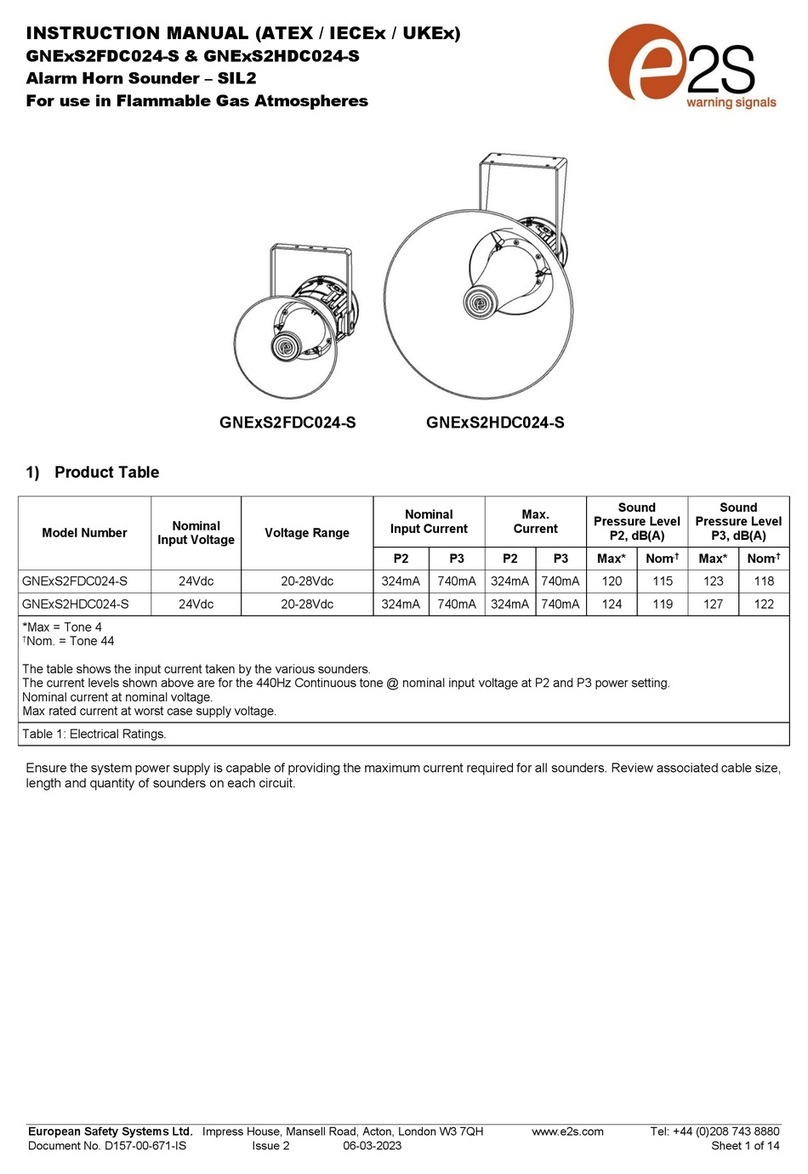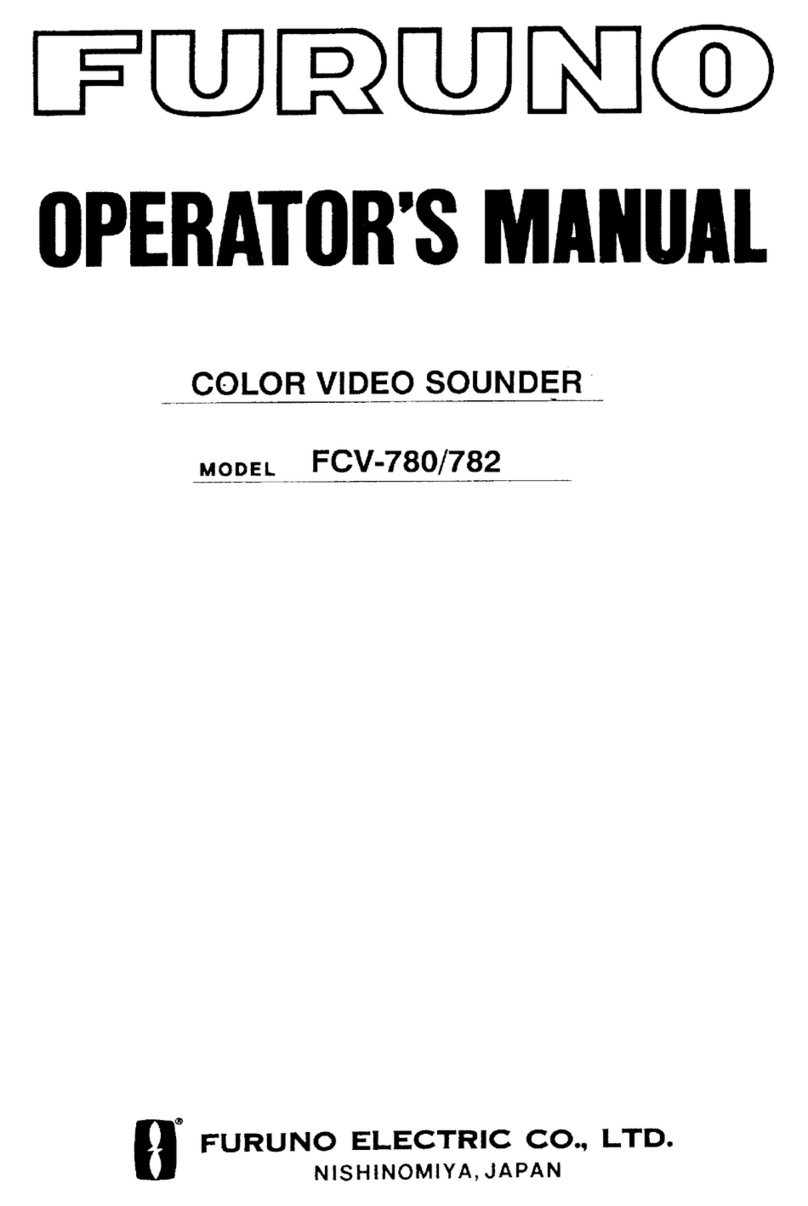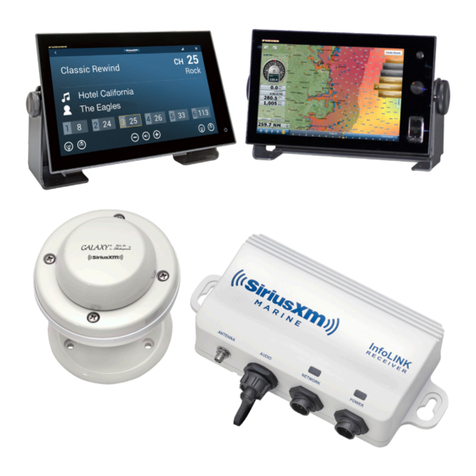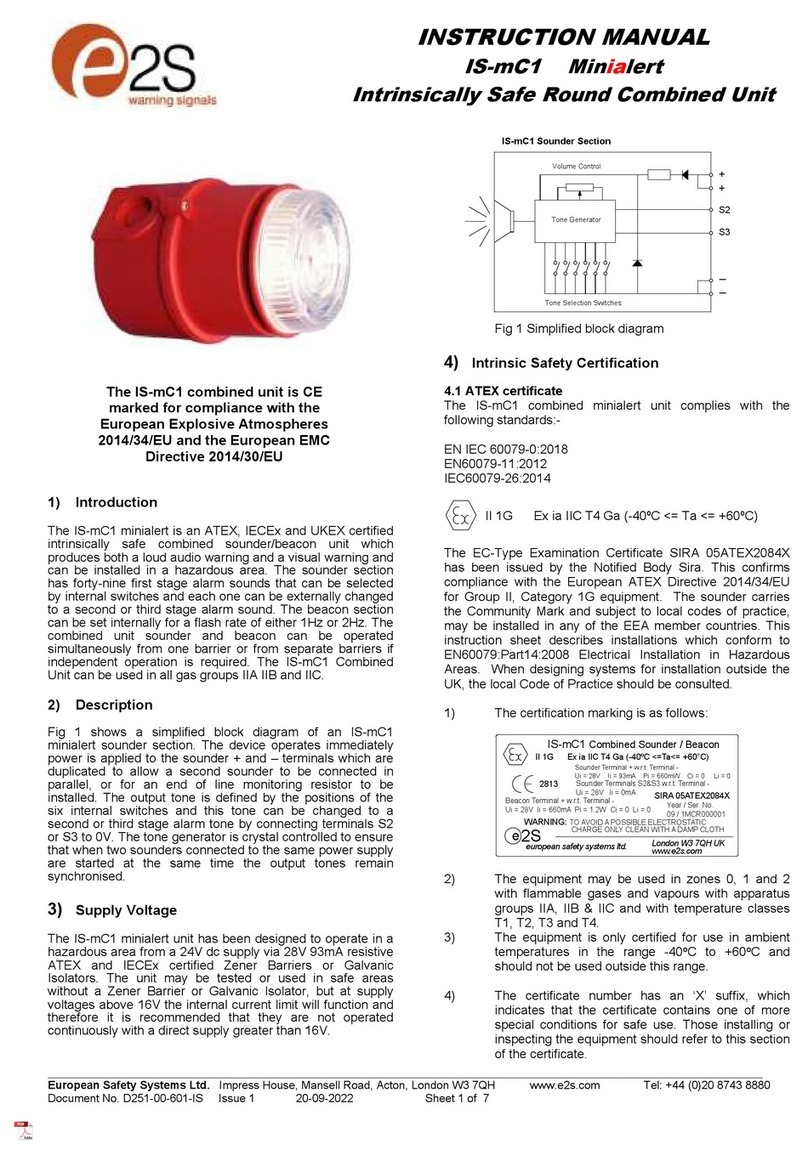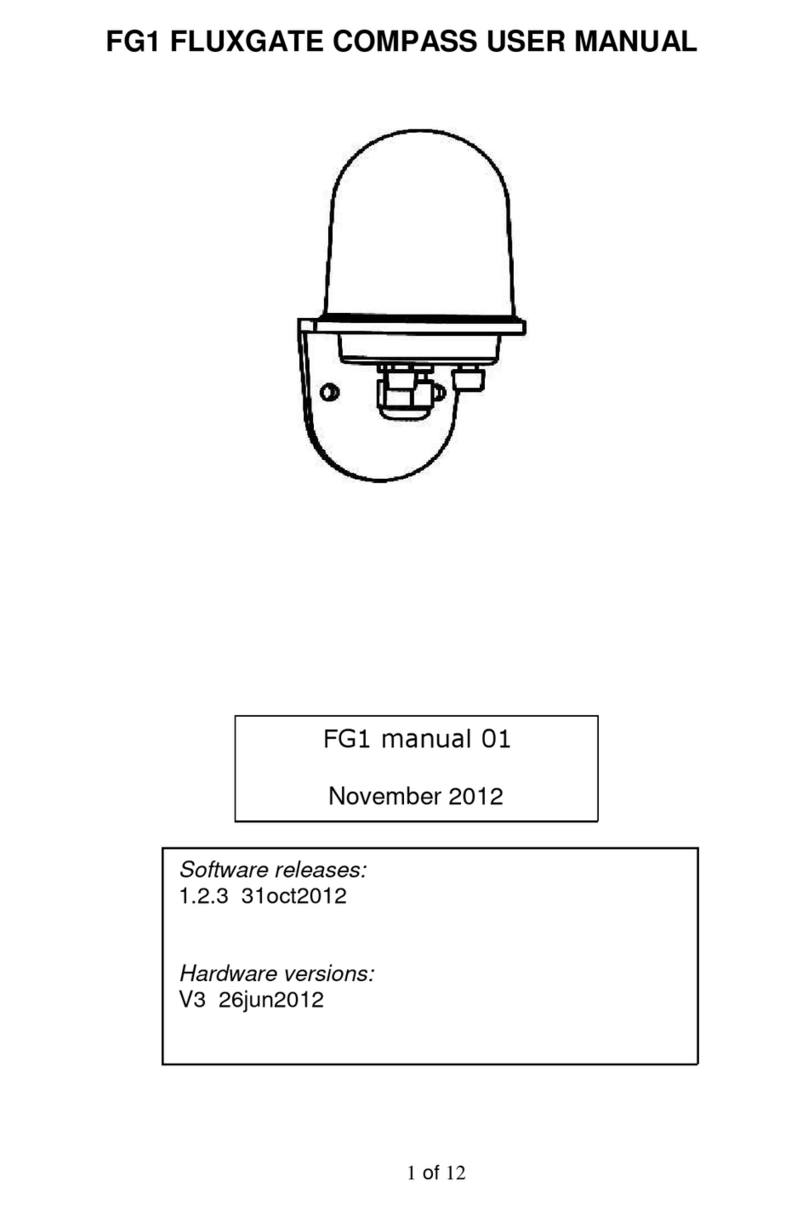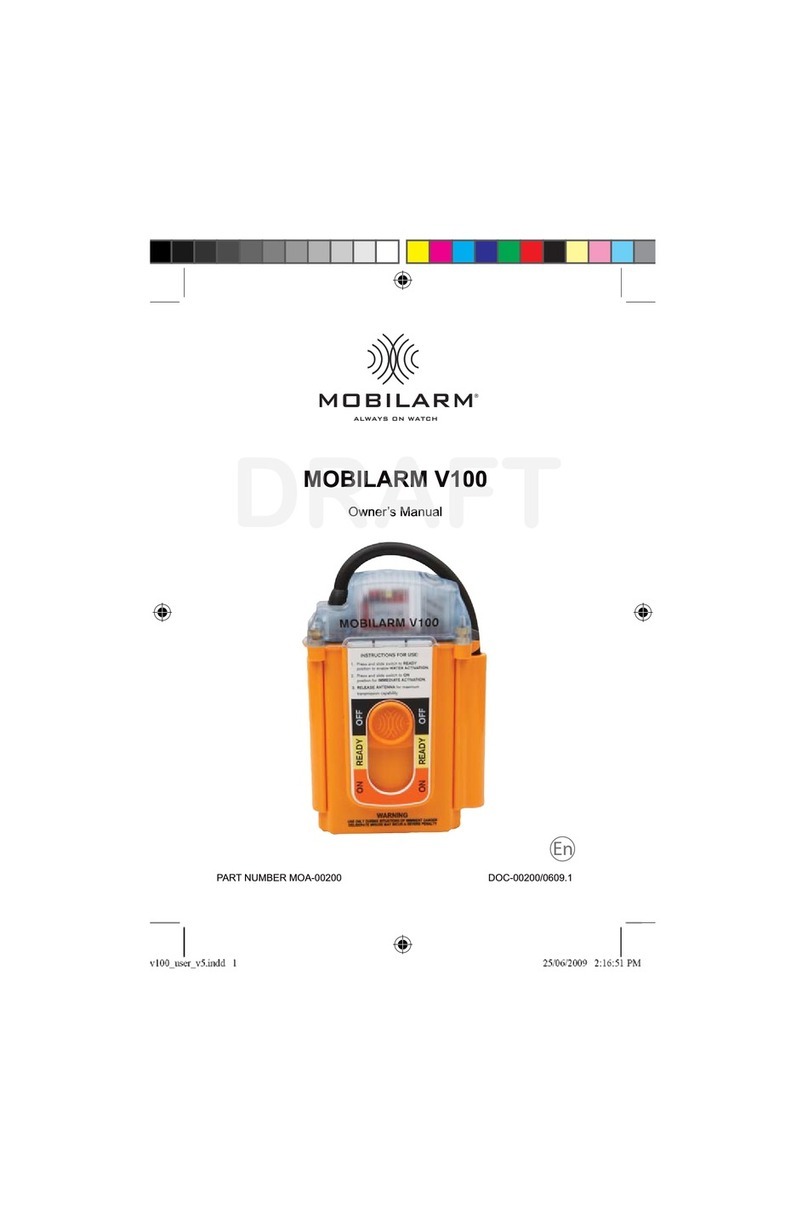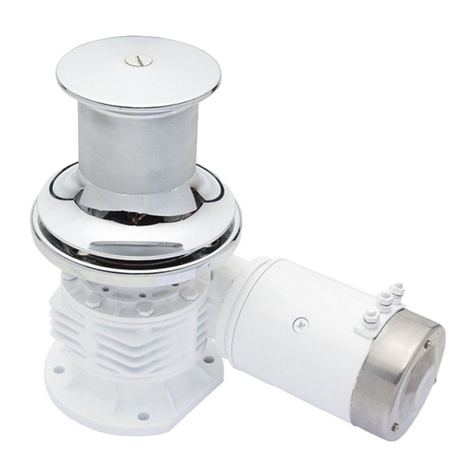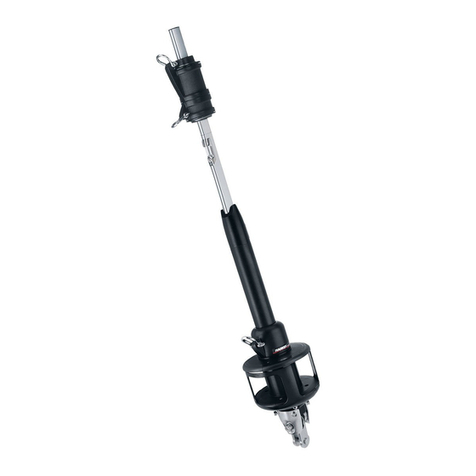Vemco Ascent AR2 User manual

D O C - 5 8 3 0 - 0 3
A R / A R 2 U S E R G U I D E
V E R S I O N 1 . 3
J U L Y 2 8 , 2 0 1 8
S T U D E N T N A M E
R O O M N U M B E R
Requires the use of the
latest VUE software

IMPORTANT SAFETY INFORMATION
At VEMCO, we make every effort to ensure all of our products are as safe as possible. However,
some hazards are unavoidable when deploying equipment underwater.
Your safety is important to us, so please read this list of cautions carefully, and follow the directions
below.
Case Pressurization
If a case leaks underwater, the inside pressure will increase to match the pressure at that depth.
This extra pressure will release as the unit is brought to the surface; however, if the leak is small,
that pressure release will be very slow. This will result in the case still being highly pressurized at
the surface.
Such a case can fly apart with explosive energy and represents a serious safety hazard.
Battery Breach
Lithium batteries contain chemicals that represent a serious health hazard –particularly
when combined with water.
Most VEMCO receivers and acoustic releases use this type of battery. A battery breach can occur if
a VEMCO receiver or acoustic release becomes damaged and water gets into the internals.
In addition, the reaction of the released chemicals with water in the sealed case can lead to case
pressurization, which could be explosive.
Safety Features
VEMCO receivers and acoustic releases that are designed to be deployed at depth may be
equipped with a pressure release that will activate when internal pressure reaches a certain level
above external pressure. This mechanism can fail if a receiver or acoustic release has been
damaged or if the release is blocked or fouled.
More details regarding specific receivers or acoustic releases can be found in the corresponding
user manual.
IMPORTANT
Throughout this document,
read all warnings and cautions
before proceeding
with next steps in procedures and using the product.

IMPORTANT SAFETY INFORMATION
What to Do?
1. Employ safety procedures required by the country or state in which you are working.
2. Always use protective clothing, gloves and glasses, and work in a well-ventilated area.
3. Treat any receiver or acoustic release pulled from the water as if it has the potential to be
pressurized or contain a breached battery. Point it away from yourself and others.
4. If a receiver or acoustic release shows any signs of internal pressure or breach, do NOT
attempt to open it. Handle it very gently and store it in an isolated location, then call
VEMCO Customer Support (see section 9.2 for contact information).
Such signs may include:
Popped or bulging pressure release
Air or water seeping from seams
Signs of internal water (e.g. sloshing sound)
Excess weight
Signs of physical damage
If a receiver or acoustic release shows signs of damage or heavy biofouling, handle with
extreme caution, and use all necessary protective equipment.

Summary of Manual
This manual is intended to provide VEMCO users with the information they require to use the
ASCENT Acoustic Release (ASCENT-AR/AR2). VEMCO highly recommends that the user fully
read the manual before using the equipment or the VUE software.
Section 1: Introduction
Getting to know the ASCENT-AR
Section 2: Getting started
Testing the ASCENT-AR before deployment
Section 3: Communication
How to use VUE with an ASCENT-AR
Section 4: Deployment
Important points to consider in a deployment plan and the most common attachment method
Section 5: Maintenance
How to care for the ASCENT-AR, including replacing the battery, and how to prepare it for storage
Section 6: Additional Information
Additional information about the ASCENT-AR that is good to know but not mandatory for basic
operations
Section 7: Common Questions
Answers to frequently asked questions related to using the ASCENT-AR
Section 8: Troubleshooting
Solutions to common issues that may arise
Section 9: Appendices
For the latest versions of user manuals and software,
visit www.vemco.com.

Table of Contents
1Introduction........................................................................ 1
1.1 System Overview................................................................................................................ 1
1.2 ASCENT-AR / ASCENT-AR2 Case.....................................................................................2
2Getting Started .................................................................... 4
2.1 Connect Battery.................................................................................................................. 4
2.2 Testing................................................................................................................................ 5
2.2.1 In-Air Test...................................................................................................................5
2.2.2 In-Water Test.............................................................................................................. 6
3VUE Communication.............................................................. 7
3.1 Installing the VUE software................................................................................................. 7
3.2 Connecting with Bluetooth ..................................................................................................8
3.2.1 Using INTERNAL Bluetooth........................................................................................ 8
3.2.2 Using the EXTERNAL Bluetooth Adapter ...................................................................8
3.3 Activate Wireless feature .................................................................................................... 9
3.4 Establish Bluetooth communication................................................................................... 10
3.4.1 The Receiver Tab..................................................................................................... 11
3.5 Select Logging Options..................................................................................................... 12
3.6 Acoustic Release in VUE.................................................................................................. 13
3.7 Logging mode................................................................................................................... 14
3.7.1 Start Logging............................................................................................................ 14
3.8 Offload Data...................................................................................................................... 16
3.9 Disconnect communication with release ........................................................................... 17
4Deployment .......................................................................18
4.1 Deployment Facts/Tips ..................................................................................................... 18
4.1.1 Mooring .................................................................................................................... 18
4.1.2 Biofouling.................................................................................................................. 19
4.2 Mooring Line Attachment.................................................................................................. 19
4.3 Acoustic Release.............................................................................................................. 20
4.4 Re-arming Acoustic Release............................................................................................. 21
5Maintenance ......................................................................24
5.1 Main Battery Replacement................................................................................................ 24
5.1.1 Open the ASCENT-AR Case.................................................................................... 24
5.1.2 Disconnecting and Removing Battery....................................................................... 26
5.1.3 Install Battery............................................................................................................ 27
5.1.4 Close the ASCENT-AR Case.................................................................................... 28
5.1.5 Resetting the Battery Usage Indicator ...................................................................... 30

5.2 O-ring Care....................................................................................................................... 31
5.2.1 Remove O-rings ....................................................................................................... 31
5.2.2 Clean O-ring Surfaces.............................................................................................. 32
5.2.3 Install O-ring............................................................................................................. 33
5.3 Storage............................................................................................................................. 33
6Additional Information..........................................................34
6.1 Flash Memory................................................................................................................... 34
6.2 Status Light Flashes ......................................................................................................... 34
6.3 Set Local options .............................................................................................................. 35
6.4 Batteries ........................................................................................................................... 36
6.4.1 Battery Life............................................................................................................... 36
6.5 Case External Dimensions................................................................................................ 37
6.5.1 ASCENT-AR............................................................................................................. 37
6.5.2 ASCENT-AR2........................................................................................................... 38
6.6 Update Firmware .............................................................................................................. 39
7Common Questions ..............................................................41
7.1 VUE related questions ...................................................................................................... 41
7.1.1 What is initialization?................................................................................................ 41
7.1.2 What Date/Time format is my sensor data stored in the release and displayed in
VUE? 41
7.1.3 What does the “Hide this alert in future” mean?........................................................ 41
7.1.4 How do I open the Options window?......................................................................... 42
7.1.5 I don’t want VUE to disconnect from the ASCENT-AR after 30 inactive minutes. How
do I change that?..................................................................................................................... 42
7.1.6 What is the Release Test?........................................................................................ 42
7.2 ASCENT-AR related questions......................................................................................... 43
7.2.1 How much range can I expect? ................................................................................ 43
7.2.2 How long will my ASCENT-AR battery last?............................................................. 43
7.2.3 Does release orientation matter?.............................................................................. 43
8Troubleshooting..................................................................44
8.1 VUE related troubleshooting ............................................................................................. 44
8.1.1 I cannot connect to my ASCENT-AR ........................................................................ 44
8.1.2 I see a Battery Usage Indicator reset warning in VUE............................................... 44
8.2 ASCENT-AR case related troubleshooting........................................................................ 45
8.2.1 The threads have been damaged............................................................................. 45
8.2.2 I think the case might be pressurized........................................................................ 45
9Appendices........................................................................47
9.1 Cleaning Instructions ........................................................................................................ 47
9.2 Contact Information........................................................................................................... 47
9.3 ASCENT-AR Specifications .............................................................................................. 48
9.4 Ascent AR2 Specifications................................................................................................ 49
9.5 Warranty and Disclaimer................................................................................................... 50
9.6 Glossary ........................................................................................................................... 51
9.7 Index................................................................................................................................. 52

© (2018) AMIRIX Systems Inc. All rights reserved. The information contained herein includes
information which is confidential and proprietary to AMIRIX Systems Inc. and may not be used
or disclosed without prior written consent of AMIRIX Systems Inc.
The Bluetooth® word mark and logos are owned by the Bluetooth SIG, Inc. and any use of such
marks by AMIRIX Systems Inc. is under license. Other trademarks and trade names are those of
their respective owners.
WARNING
If the ASCENT-AR/AR2 is not used in the manner specified in this
manual, then the manufacturer’s warranty protection may be voided.

VEMCO –ASCENT–AR / AR2 Manual 28 July 2018 1
1Introduction
1.1 System Overview
The ASCENT –Acoustic Release (ASCENT-AR / ASCENT-AR2) is a submersible, single-channel acoustic
release capable staying under water for up to five years. The ASCENT-AR acoustically communicates with a
VR100-200 receiver, and separating from its mooring after an acoustic release command is received and
verified.
The ASCENT-AR is housed in a corrosion resistant cylindrical plastic high
pressure case (AR and AR2 shown at right). The case incorporates an
integral hydrophone at one end of the case and a replaceable mooring lug at
the other end. The ASCENT-AR has the ability to:
Communicate with VUE software through a Bluetooth connection
Quickly and reliably release from its mooring lug (typically within a
few seconds)
Easily re-arm the release mechanism
Allow easy attachment of floatation to exterior casing for buoyancy
Can respond to a VR100-200 without entering a specific serial
number or location
Communicate additional status information to the VR100-200 and
make changes to select receive and transmit operations while
deployed, such as power settings
Report release status and activate the release through the VR100-200
acoustic communication
Report range and depth information as the unit is rising to the surface
The ASCENT-AR communicates to the surface through our VR100-200 active tracking receiver. It is
compatible with all VR100-200 models sold since January 2013. Customers will require a transponding
hydrophone to attach to the VR100. The ASCENT-AR release information that can be
accessed through the VR100-200 includes:
Unit health
Tilt, depth and temperature
Battery life and memory usage
Release range which will aid in locating the release
Built in Transmitter configuration allowing users to change the power setting of the
transmitter
The release mechanism is a mooring lug that is controlled by a DC motor using a
titanium shaft. The exterior of the mooring lug shaft is copper to reduce bio-
fouling.

VEMCO –ASCENT–AR / AR2 Manual 28 July 2018 2
1.2 ASCENT-AR / ASCENT-AR2 Case
The ASCENT-AR / ASCENT-AR2 is housed in the black plastic high pressure case. The case consists of an
outer cylinder that is removed to install the D (AR) or DD-cell (AR2) Lithium battery, the endcap which
houses the hydrophone and connects to the metal internal casing, and the mooring lug that separates from the
case to allow the release to rise to the surface. When the outer cylinder is removed, the internal casing
protecting the electronics can be seen. The case dimensions are found in section 9.3.
A crucial part of the release is the hydrophone, located at the top. The hydrophone is similar to a microphone
–it “listens” for sounds and transfers them to the electronics inside the release. This ability to both listen and
broadcast allows the ASCENT–AR to communicate with a VR100-200 through a transponding hydrophone.
Like all hydrophones, the ASCENT-AR hydrophone is a sensitive piece of equipment. Avoid striking the
hydrophone or allowing any object to impact it as damage may occur that would prevent the release from
communicating with the VR100-200.
Do not bump the hydrophone
or the release may be damaged
and unable to communicate.
Retaining O-ring: Holds the Retaining Pin in
place.
Hydrophone: the release
“microphone/speaker” and
most delicate part.
Mooring Lug: This hole is used to secure the
release to its mooring. The mooring lug is left
behind when the acoustic release occurs.
Pressure Sensor: Used to measure depth.
Measurements are stored in memory and
reported to VR100-200 during acoustic
communication.
Bluetooth Activator Hole: Place the narrow
end of the Bluetooth Activator in here to
prepare for communication. Section 3.3 has
more information on the Bluetooth Activator.
Status Light (LED)/Release Valve: The
light flashes red or green to indicate the
release status. Section 6.2 has the full
description.
The Release Valve will open if the internal
pressure is greater than the external
pressure (see section 8.2.2). Never cover
this valve.
Float Attachment Bracket: contains two
9/16” holes for attaching a floatation device.
2 red flashes every 5 sec =
Active Mode

VEMCO –ASCENT–AR / AR2 Manual 28 July 2018 3
The ASCENT-AR is shipped closed. The case only needs to be opened to power the unit. Because the
ASCENT-AR is often shipped with the battery installed but not connected, the first task is usually to open the
case and either connect or install the battery. The only other time the case needs to be opened is when
replacing the battery or preparing the unit for long-term storage. Connecting the battery is explained in
Section 2, along with opening and closing the release case. Replacing the battery is explained in Section 5.1.
ASCENT-AR / AR2 Quick Facts
Dimensions
AR: 401 mm (15.63") x 81 mm (3.2") diameter
AR2: 465 mm (18.29") x 81 mm (3.2") diameter
Weight
AR: 2350 g in air; 500 g in water
AR2: 2746 g in air, 812 g in water
Release Frequency
81.0 kHz
Battery Life
Approximately 28 (AR w D-cell) or 60 months (AR2 w DD-cell)
Memory
16 MB
Operating temperature
-5°C to +40 °C; Water must not freeze.
Maximum Depth
500 meters (730 psi)
Software
Latest VEMCO User Environment (VUE) software
Communication
In air: Bluetooth communication with VUE software
In water: Acoustic communication with a VR100-200 using a
transponding hydrophone
WARNING
The ASCENT-AR pressure case and seal have a maximum static depth rating
of 500 meters (730 psi). Physical shocks to the release, such as bumping
into a solid object, when it is at any depth can result in a considerably higher
pressure on the casing than just the depth pressure and water may enter the
ASCENT-AR case. If the O-rings or their mating surfaces are dirty or
damaged, then water may also enter the release case. If you are suspicious
that water has entered the release, then follow the suggestions in section
8.2.2
for troubleshooting a pressurized case.

VEMCO –ASCENT–AR / AR2 Manual 28 July 2018 4
2Getting Started
After the ASCENT-AR has been removed from the packaging and inspected for any damage that may have
occurred during shipping, power and test the unit to ensure you can communicate with the release and it is
working properly. The ASCENT-AR was shipped with the batteries
installed but NOT connected.
2.1 Connect Battery
ASCENT-AR is shipped with
the battery installed but
NOT connected.
Open the ASCENT-AR case as described
in section
5.1.1
. You’ll find two batteries
in the Metal Internal Casing. The smaller
battery operates the release motor and is
already connected. The D or DD-cell
Lithium battery powers all other
operations in the
ASCENT-AR and is
usually shipped unconnected within the
release.
STEP 1
Position the release so you can
see the Status Light.
Connect the two battery connector
halves together until a “click” is
heard and the
ASCENT-AR
release’s light begins flashing.
Watch for a long green light to indicate the self-tests
were successful. If you see the long red light followed
by more flashes, then contact VEMCO for instructions.
STEP 2
Close the release case by following the instructions in section 5.1.4
STEP 3
WARNING
Do not over-tighten the case
pieces together or they may
be damaged.

VEMCO –ASCENT–AR / AR2 Manual 28 July 2018 5
2.2 Testing
Before deploying the ASCENT-AR, it is wise to test it with the VR100-200 receiver to verify that it is
operating properly. This test also creates a VRL file containing all the configuration information for this
release –handy to keep as a record of the configuration.
Tests can, and should, be done in both air and water.
2.2.1 In-Air Test
1. Communicate using the transponding hydrophone and VR100-
200 (details about using the VR100-200 are found in the VR100
related user manuals).
a. Connect the transponding hydrophone to the
hydrophone connector on the VR100-200
b. Place the caged end of the hydrophone within 15
cm (6”) of the hydrophone on the ASCENT-AR.
c. Turn on the VR100-200.
d. Select “Transpond” in the main screen.
e. Select “Scan” and wait for the ASCENT-AR
serial number to appear on the screen.
f. Select the ASCENT-AR.
g. Select “Status…” from the menu (press “1” on
keypad).
h. Select “Get Range” (press “1” on keypad). This
establishes communication between the
ASCENT-AR and the VR100-200 and reduces the “talk time” necessary to communicate.
i. Press the “MENU” button twice to move back to the Transponding menu.
j. Select “Acoustic Release” (#3)
k. Select “Status” to view the ASCENT-AR status. It should report “ready” at this stage. Press
MENU to go back to the menu.
l. Select “Activate” and enter the 5-digit activation code when prompted. Select the right
selection button (“Activate”) again.
m. Wait while the mooring lug is ejected from the release;
status is reported as “Opening” during this phase.
Reset the mooring lug for another acoustic release (see section 4.4
Perform air tests away from
electrical noise sources such
as motors, PC screens, or
fluorescent lights.
Find more transponding features in the
VR100 user manual addendum.
ASCENT:000001 170m
Enter the code:
00000
Activate

VEMCO –ASCENT–AR / AR2 Manual 28 July 2018 6
2. Re-arming Acoustic Release). NOTE: The acoustic communication between the VR100-200 and the
ASCENT-AR must time-out (be dormant for more than 10 minutes) in order for the release to report
the ready state again.
2.2.2 In-Water Test
Tests performed in water are almost identical to the in-air test explained above. The only difference is that
the equipment does not need to be as close in water as it does in air. In-water tests are often performed to
establish an ideal range for the release in the environment in which they are moored.

VEMCO –ASCENT–AR / AR2 Manual 28 July 2018 7
3VUE Communication
The ASCENT-AR uses either Bluetooth or acoustic communication, depending on the nature of the
communication. Bluetooth communication occurs in air between the ASCENT-AR and VUE software. It is
with VUE that data is offloaded and memory is erased. Acoustic communication occurs through water while
the ASCENT-AR is deployed and requires a VR100-200 receiver with a transponding hydrophone attached.
The detailed instructions for using a VR100-200 with a release are located in the VR100-200 Transponding
manual. This section details how to communicate with the ASCENT-AR using VUE software and a
Bluetooth connection.
Bluetooth is still a relatively new standard and we have observed that not all
Bluetooth devices are created equally or work reliably. To ensure successful
operation with the VEMCO ASCENT-AR, we provide our users with a
Bluetooth USB adapter in the ASCENT-AR Communications Package that
we are confident will provide reliable functionality.
3.1 Installing the VUE software
VUE software is used to communicate with the ASCENT-AR receiver, allowing studies to be setup and data
to be offloaded. The software requires either Windows VISTA, Windows 7, 8, or 10.
NOTE: A Bluetooth USB adapter is required for operation with the ASCENT-AR receivers because they use
Bluetooth communication. See section 3.2 for details.
NOTE:
Due to Bluetooth characteristics
in water, the ASCENT-AR must
communicate with the Bluetooth
USB adapter through air
(typical range is 10 meters).
Follow the link in the VUE
email you received. VUE is
also available at
www.vemco.com/downloads.
STEP 1
Read the license
agreement and select
“I accept” and “Next”
if you agree to the
terms.
STEP 3
Click “Next” to install
VUE in the folder
shown, or click
“Change” to select a
different folder.
STEP 4
Click “Next” when the
Install Shield Wizard
begins.
STEP 2

VEMCO –ASCENT–AR / AR2 Manual 28 July 2018 8
3.2 Connecting with Bluetooth
There are two ways to connect your PC or laptop through Bluetooth for communication with your receiver.
Use the method that suits the equipment you have.
3.2.1 Using INTERNAL Bluetooth
There are a number of Windows Operating Systems (OS) PCs, laptops, and tablets equipped with internal
Bluetooth capable of communicating with VEMCO receivers through the VUE software.
1. Open VUE software (latest version available from http://vemco.com/downloads).
2. Observe the Bluetooth icon at the bottom of the window. In most cases, it will look like the
Bluetooth icon shown at right, indicating that you’re ready to communicate with VEMCO
Bluetooth equipment, like an ASCENT-AR. If VUE is not able to perform Bluetooth
communication, you will see a red “X” through the icon.
NOTE: Communication difficulties may occasionally occur when the red “X” is not present. If this happens,
follow the suggestions in the Bluetooth Troubleshooting Guide available on our website.
3. Connect to the receiver. Instructions are found in the receiver’s user manual. If a Bluetooth
connection cannot be established with the receiver, try using the VEMCO-supplied Bluetooth USB
adapter as described in the next section.
3.2.2 Using the EXTERNAL Bluetooth Adapter
If your computer does NOT have internal Bluetooth capability, use the VEMCO-
supplied USB Bluetooth adapter, as described here.
Attach the Bluetooth adapter (may not be as shown) to any USB port on your computer.
Click “Finished” to exit the
setup wizard.
STEP 6
Click the “Install”
button and wait while
the VUE software is
installed.
Click “Next” when it
becomes enabled.
STEP 5
IMPORTANT: If you want to use the internal Bluetooth, DO NOT INSERT the VEMCO supplied
Bluetooth adapter into your device, and follow the steps below.
If you are using Windows Vista, then you must install VUE 2.1.3 or greater for the proper
adapter drivers. Windows 7 and greater have the necessary drivers installed.

VEMCO –ASCENT–AR / AR2 Manual 28 July 2018 9
3.3 Activate Wireless feature
The Bluetooth feature in the ASCENT-AR must be activated before the VUE software will be able to find and
connect to the release. Activation requires a specially designed Bluetooth Activator.
The Bluetooth Activator is a stepped cylinder made of black plastic material. A strong magnet is contained in
the smaller end of the Bluetooth Activator and should be kept away from any magnetically sensitive
materials. An orange float is attached to the Bluetooth Activator for easier handling and locating of the
activator. This activator functions with other VEMCO receivers that use a Bluetooth Activator, such as the
VR2W and the VR4-UWM.
The flash pattern in the ASCENT-AR indicates the mode (state) the release is in at the time. A bright, long
red flash once a second indicates that the ASCENT-AR is now ready for wireless communication but is not
yet in communication with VUE.
The Bluetooth Activator can be removed from the
ASCENT-AR once the light is flashing.
WARNING
The Bluetooth Activator contains a
strong magnet. Do not put it near
magnet-sensitive materials, such as
CRT computer monitors or magnetic
stripes, as they could be seriously
damaged.
TIP
The ASCENT-AR must be within 10 meters (32 feet) of
the operating Bluetooth® USB adapter.
MAGNET
FLOAT
BLUETOOTH
ACTIVATOR
Slide the smaller end
of the Bluetooth
Activator in the
Bluetooth Activator
Hole on the
ASCENT-AR
, near
the hydrophone.
STEP 1
Wait until the
ASCENT-AR
’s LED
begins flashing a bright, long,
steady, red flash once a second.
The wait time is less than five
seconds.
Remove the Bluetooth Activator.
STEP 2
Bright, red flash every second

VEMCO –ASCENT–AR / AR2 Manual 28 July 2018 10
3.4 Establish Bluetooth communication
After the ASCENT-AR has been activated (section 3.3), it is ready for wireless communication with the VUE
software. The ASCENT-AR must be within communication range of the Bluetooth USB adapter, which is
typically 10 meters (32 feet) but can vary based on physical
and wireless obstructions/interference. Due to Bluetooth®
wireless technology characteristics in water, the ASCENT-AR
must communicate to the Bluetooth® USB adapter through air.
ASCENT-AR communication range:
10 meters (32 feet) through air from
Bluetooth® USB adapter.
Open the VUE software. The software will scan for any active devices within
communication range.
Wait while the software searches for the release.
STEP 1
All Bluetooth® activated VEMCO release within
communication range will be displayed when a Device Scan is
performed.
When the software finds the release, the ASCENT icon will be
displayed in the “Bluetooth Devices” section of the Home tab with
the release serial number for identification. It will display all
Bluetooth® activated devices (LED is flashing bright, long,
steady, red flashes) within communication range, which is
approximately 10 meters.
If wireless communication has not been activated on the
ASCENT then activate communication (section
3.3) and click
“Device Scan” on the software’s Home tab.
Wait while the software searches for devices.
TIP: If VUE can’t find your release(s), try again. It’s not
uncommon for a Bluetooth scan to miss devices, especially if
other wireless devices are in the area.
Double-click on the release icon of the desired
ASCENT-AR (serial number is listed under the
icon) and wait while communication is established. You’ll know communication was
successfully established when information pertaining to this release is displayed and the
release LED is on continuously. The “Link Status” in the VUE window also changes to
“Connected”.
STEP 2
TIP: VUE can communicate with up to seven wireless devices simultaneously.

VEMCO –ASCENT–AR / AR2 Manual 28 July 2018 11
3.4.1 The Receiver Tab
Each release currently in communication with VUE has a tab at the top of the VUE window. This tab identifies the type
and serial number of the release. Click on a tab to bring it to the front of all the tabs, making this release information
visible.
CAUTION: Verify the release you are communicating with is the intended unit,
particularly before initializing and erasing memory, or data could be lost.
Communication can occur with any ASCENT-AR with Bluetooth® wireless
technology activated within a 10 meter range (typical range in air).
Release information
specific to this
ASCENT-AR is
contained in the center
of the window.
Release type (AR) and
serial number
The ribbon section contains tasks and
advanced options, including offloading
data, firmware upgrades, recording
(initializing) and ending communication.

VEMCO –ASCENT–AR / AR2 Manual 28 July 2018 12
3.5 Select Logging Options
By default, the temperaure, tilt, noise, and depth statistics are logged (recorded) once an hour in the
ASCENT-AR memory. The time between recordings can be changed in the Logging Options window by
selecting a different “Stats Period” for the statistic of interest.
These statistics are calculated from sample values that were taken every 10 minutes and logged. By default
the sample values are not logged to the ASCENT-AR memory because of their potential effect on the
memory levels. The option is available to log every sample and to chose which statistics will be logged. If
you’d like to change what is logged, follow the steps below.
Click the gear shaped icon in the VUE ribbon and select Logging Options to open
the Logging Options dialogue box.
STEP 1
STEP 2
Select which samples should be recorded in the log. The
amount and percentage of total log usage per year is listed
at the bottom of the window to give an indication of the
impact your selections make on memory storage. For
example, logging everything uses 196.4 KiB while the
default of only storing the Stats values uses 16.8KiB.
Select OK.
Return to
default settings
Ambient noise in the area can be recorded
and viewed in VUE. This information may be
helpful in comparing deployment locations
and determining if noise may be affecting tag
detections.
1 KiB (kibibyte) = 1024 bytes
(also known as a kilobyte or kB)

VEMCO –ASCENT–AR / AR2 Manual 28 July 2018 13
3.6 Acoustic Release in VUE
The mooring lug on the ASCENT-AR can be released while the release is in Bluetooth communication with
VUE. Under the gear shaped Device Options, select Acoustic Release. A window will open requiring you to
confirm the release before the command will be sent to the release.
Click the gear shaped
icon in the VUE ribbon
and select Acoustic
Release.
STEP 1
Select “Yes” to continue with the release.
STEP 2
Remember: The mooring lug must
be re-armed before another release
can occur. Instructions are found in
section 4.4.
This manual suits for next models
1
Table of contents
Popular Marine Equipment manuals by other brands
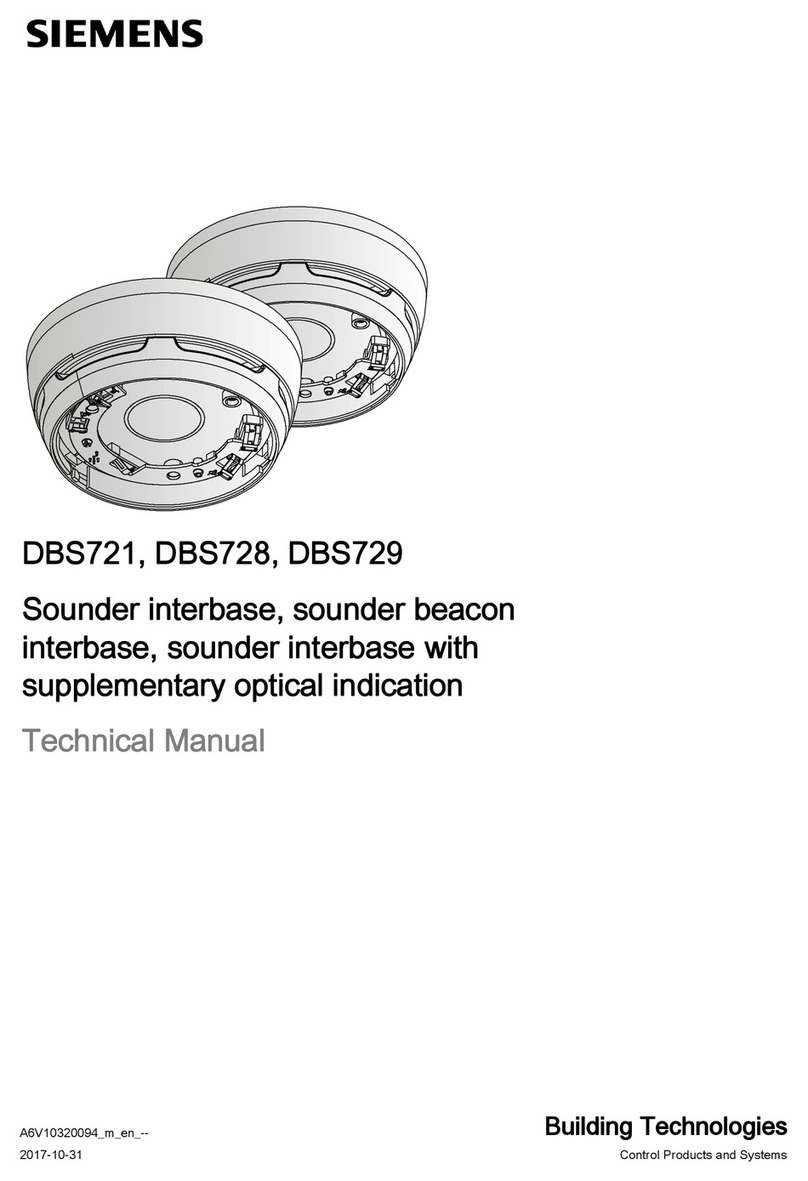
Siemens
Siemens DBS721 Technical manual
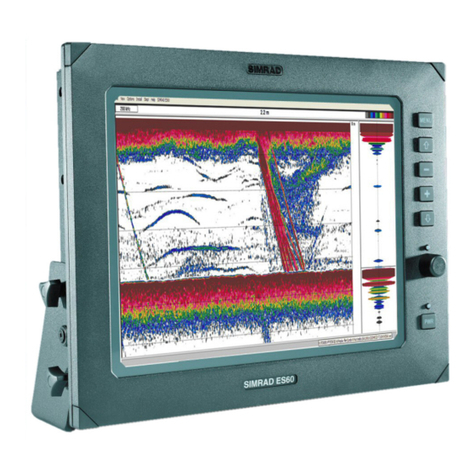
Simrad
Simrad ES60 - DATASHEET REV A installation manual
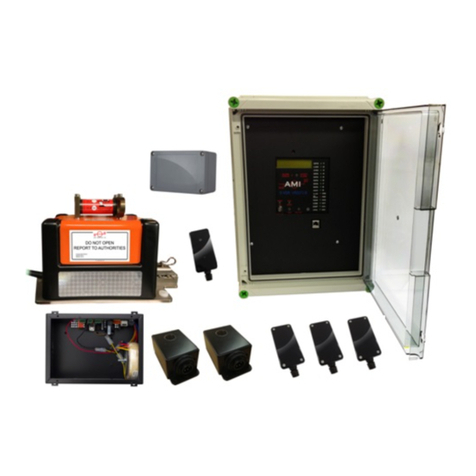
AMI Marine
AMI Marine VR2272B operating manual
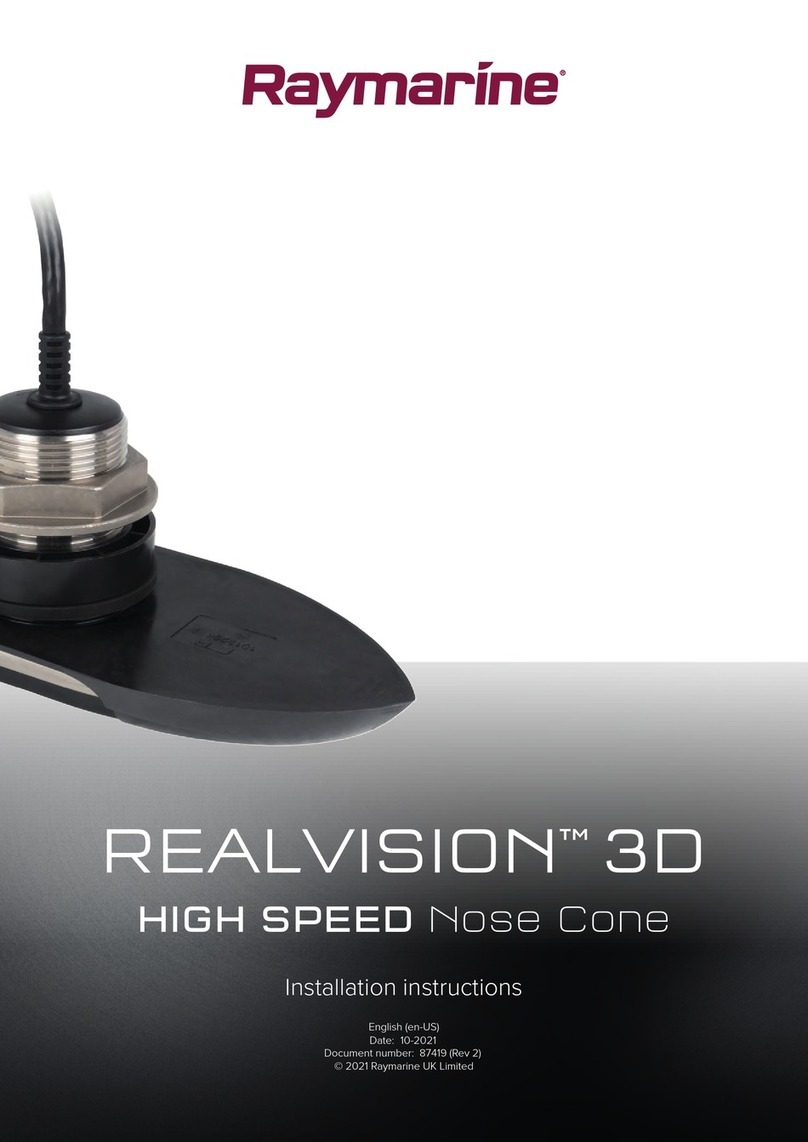
Raymarine
Raymarine REALVISION 3D installation instructions
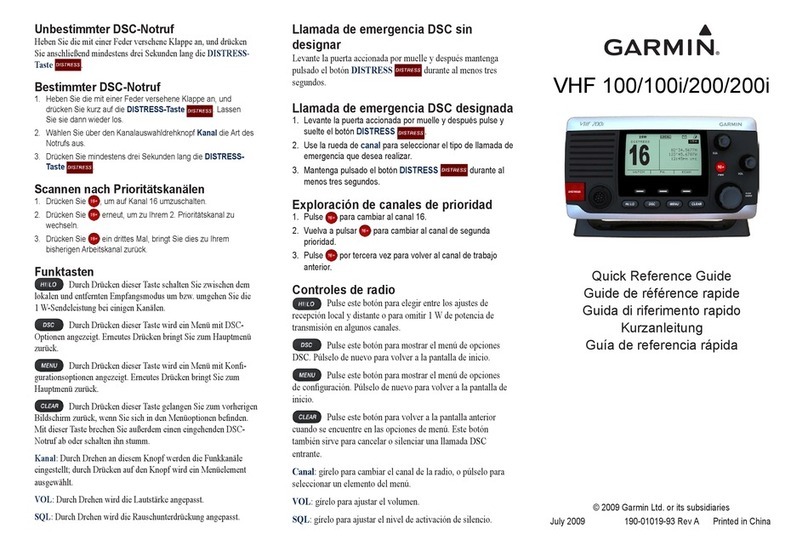
Garmin
Garmin VHF 200 Series Quick reference guide
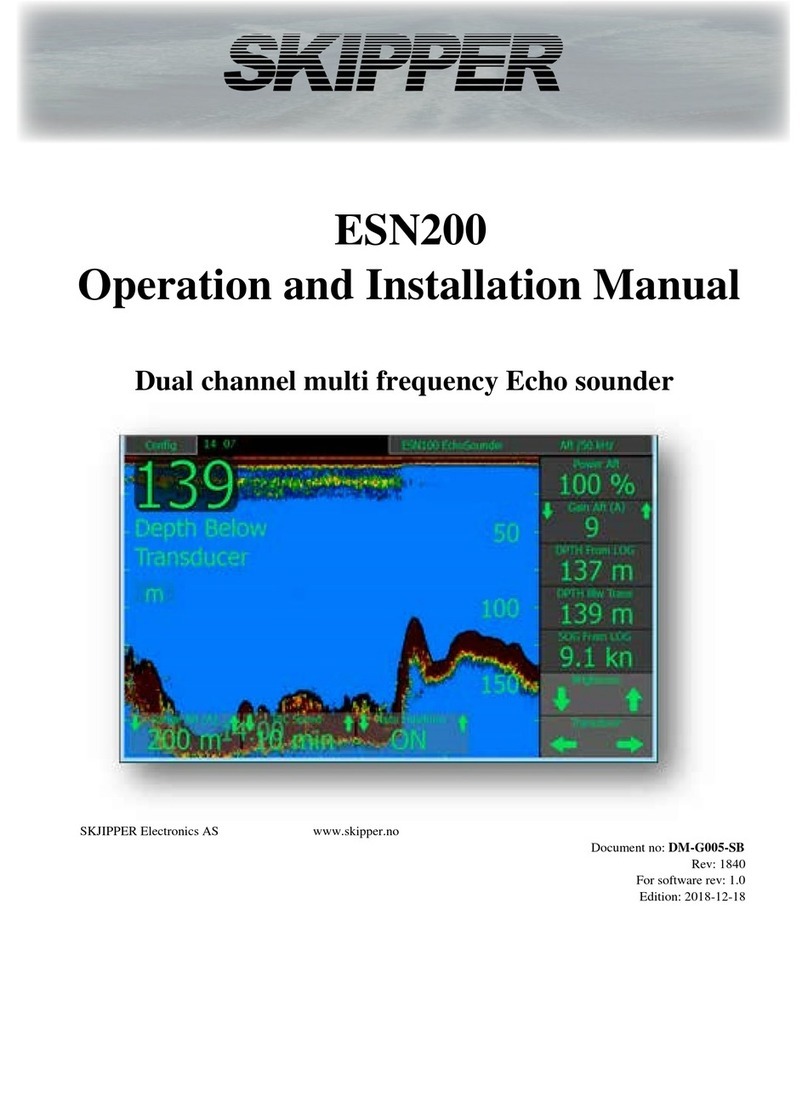
Skipper
Skipper ESN200 Operation and installation manual
